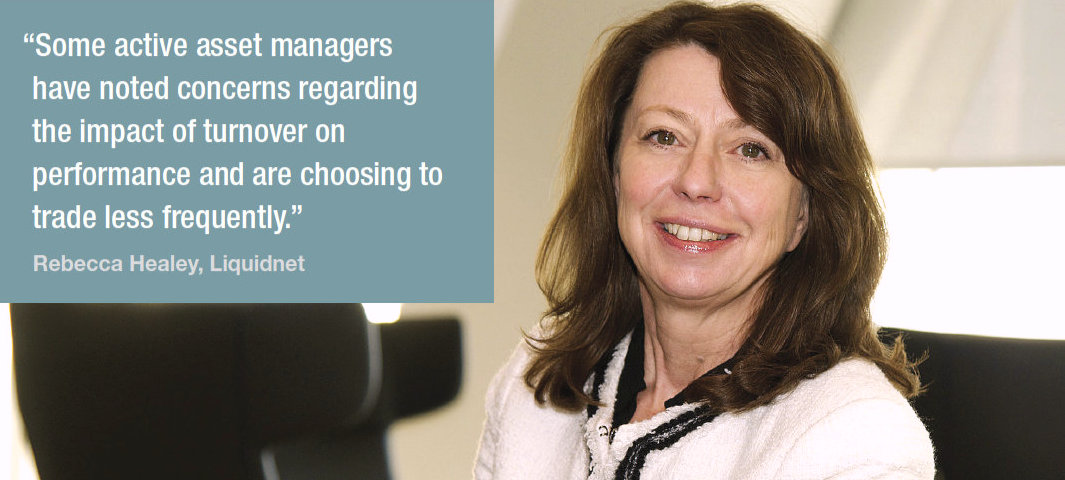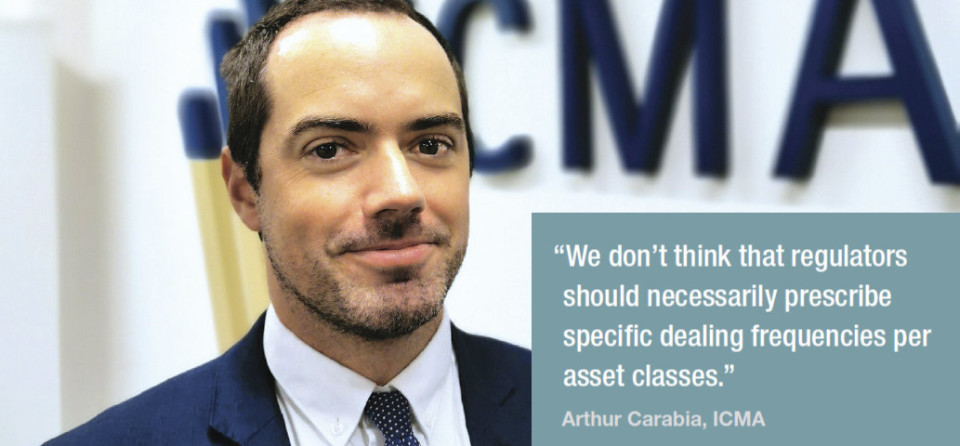New guidance on fund liquidity has followed redemption concerns in European equity and bond funds, writes Lynn Strongin-Dodds.
The risk that funds are unable to meet their redemption obligations due to holding of illiquid assets was brought into sharp focus by the high-profile closure of Neil Woodford’s flagship Woodford Equity Income Fund last year, and more recently with Nordic funds shuttering for short periods to calculate their net asset value (NAV). Swiss asset management group GAM’s decision in 2018 to gate its SFr11 billion ($11.3 billion) Absolute Return Bond fund range also sent shockwaves throughout the industry. At the heart of these incidents was the level of illiquid assets used to construct the portfolios.

“Woodford became a forced seller because he had to sell the most liquid assets first to meet the redemptions and then was left with illiquid assets,” says Mark McKeon, global head of investment analytics at State Street Global Exchange.
Liquidity risk in European funds currently falls under the regulatory frameworks of Undertakings for the Collective Investment in Transferable Securities (UCITS) which captures long-only funds amongst others and the Alternative Investment Fund Managers Directive (AIFMD) which captures hedge funds.
Stemming from the European Systemic Risk Board (ESRB) recommendations published in 2018, the European Securities and Markets Authority (ESMA) published its ‘Guidelines on liquidity stress testing in UCITS and AIFs’ in September 2019. However, these stop short of a more prescriptive approach, which is seen in other jurisdictions.
“The Securities and Exchange Commission (SEC) has introduced a framework that makes managers think about redemptions, their size and how they respond,” says McKeon. “I think we will see European and Asia Pacific (APAC) regulators start to think in the same way as the US.”
The US regulator updated its 2016 laws with more comprehensive, formal frameworks to measure, manage and report liquidity. This involved dividing a portfolio into four liquidity buckets based on the time needed to convert to cash and specific to parameters of the position and the fund. It also required fund managers to plan for the impacts of redemptions, tightened credit, or more extensive market illiquidity in times of both normal and stressed conditions.
The same rules, only better
There have been some regulatory changes to liquidity rules; last September the UK’s Financial Conduct Authority (FCA) issued new rules for some specific open-ended funds investing in “inherently illiquid assets” such as real estate, which are focused on non-UCITS retail schemes. In its letter to the board of authorised fund managers in November 2019, the FCA outlined their expectations with regards to liquidity management and reminded fund managers of their responsibility to ensure good fund governance and consider liquidity risks appropriately.
In December 2019, the Financial Policy Committee published the initial findings of the FCA and the Bank of England’s joint review of liquidity risks in open-ended investment funds which the FCA plan to use to develop new rules.
The direction of travel within Europe more broadly is likely to be based on boosting the existing regulatory structure, rather than imposing a new framework says Etain de Valera, partner at law firm Dillon Eustace.
“Liquidity management and stress testing are already part of the UCITS and Alternative Investment Management (AIF) framework and I think that the regulators will stop short of a strict rule- based approach,” he says. “I think what we will see is greater engagement by regulators as well as focus on clarity and the development of a better articulated framework.”

Brendan Toolan, general manager at Mitsubishi UFJ Investor Services & Banking (Luxembourg) S.A. – Dublin Branch, believes that a major focus of regulators is to get fund managers to implement and use liquidity risk frameworks as a tool for increased supervision and governance.
“The aim is to minimise the possibility of an adverse effect to the fund, and to ensure there are guardrails and strong lines of defence developed through scenario testing.”
Chiara Sandon, senior regulatory policy advisor at EFAMA, echoes these sentiments; “We already have a set of requirements in UCITS and AIFM Directives, as well as the international standards published by IOSCO in 2018 which advocates stress testing by managers as an important component of the liquidity risk management process. What we need is better regulatory oversight and to ensure that the rules we have in place are being applied.”
To that end, ESMA kickstarted the year with a call for a more unified approach with its Common Supervisory Action (CSA) which will work with National Competent Authorities (NCAs) or national regulators.

“The exercise will be conducted throughout 2020 to assess fund managers’ consistent adherence to the provisions as defined in the UCITS regulatory framework,” says Rebecca Healey, global head of market structure and strategy at Liquidnet, adding that ESMA wants to ensure that investors can redeem their investments on request and financial stability across the European Union.
The European watchdog’s introduction of liquidity stress testing guidelines for all asset classes at the end of last year was aimed at injecting more transparency into the process and to be clear about their expectations for assessments and evaluations. For example, ESMA decreed that, as a minimum, the stress tests should be carried out at least annually, but outlined a preference for quarterly tests. It also confirmed that, where appropriate, tests should be done at each stage of the fund’s lifecycle. These issues will also remain a top priority for the Financial Conduct Authority in the post Brexit world.
“The FCA will continue to review funds’ governance and liquidity and work with other regulators such as the Bank of England and the PRA (Prudential Regulation Authority) to ensure compliance across the industry,” says Healey.
Daily dealing
The FCA and the Bank of England will also continue to look into daily-dealing funds holding illiquid assets. However, some market participants do not anticipate major changes.

“Ultimately we don’t think that regulators should necessarily prescribe specific dealing frequencies per asset classes,” says Arthur Carabia, director at the International Capital Markets Association (ICMA), secretary to the ICMA Asset Management and Investors Council (AMIC) and author of the updated ICMA, AMIC and the European Fund and Asset Management Association (EFAMA) Managing Liquidity Risk in Europe report which advocates greater focus on supervision and enforcement of the current comprehensive EU rules.
“Depending on funds’ characteristics such as investor profile and strategy as well as applicable laws, asset managers and the national supervisors should determine during the fund’s authorisation process the appropriate structure including type of vehicle (open-ended versus closed-ended), redemption frequency and relevant liquidity risk management tools when allowed,” he adds.
Carabia notes that for some fewer liquid assets like real estate, the report found that most fund managers do not offer daily redemptions. Bond funds subject to the UCITS and AIFM directives were subject to a severe sectorial stress test by ESMA in 2019 and the conclusion was positive.
“Overall, most funds are able to cope with these shocks, as they have enough liquid assets to meet investors’ redemptions and that the overall price impact is limited for most asset classes, as sales by funds are only a fraction of aggregate trading volumes,” he says.
Where regulators may feel comfort, clients may not. Buy-side trading desks report increased interest from end investors in the liquidity profile, and trading capacity of funds (see p.12). Healey believes that the Woodford scandal itself has left its mark on the industry and trading practices.
“Some active asset managers have noted concerns regarding the impact of turnover on performance and are choosing to trade less frequently,” she adds. “In an increasingly complex trading environment, selecting the most appropriate trading counterparties, understanding new trading protocols and routing practices to ensure delivery of best execution, as well as maximising any alpha opportunities available are the main focus for the European buyside trader in the year ahead.”
©The DESK 2020
©Markets Media Europe 2025













